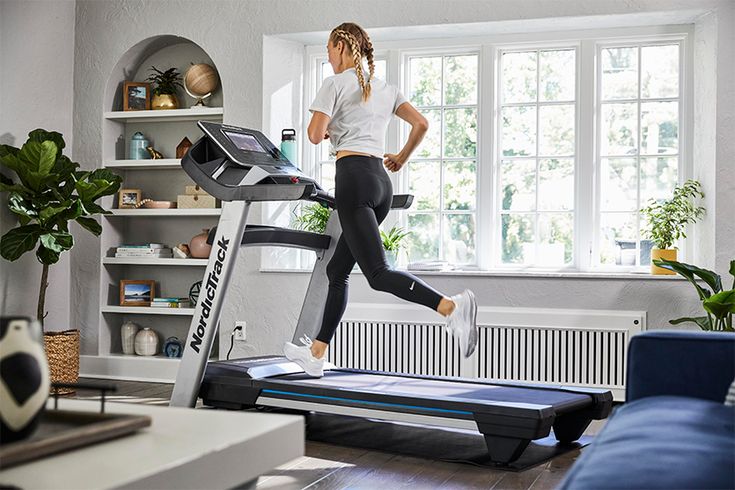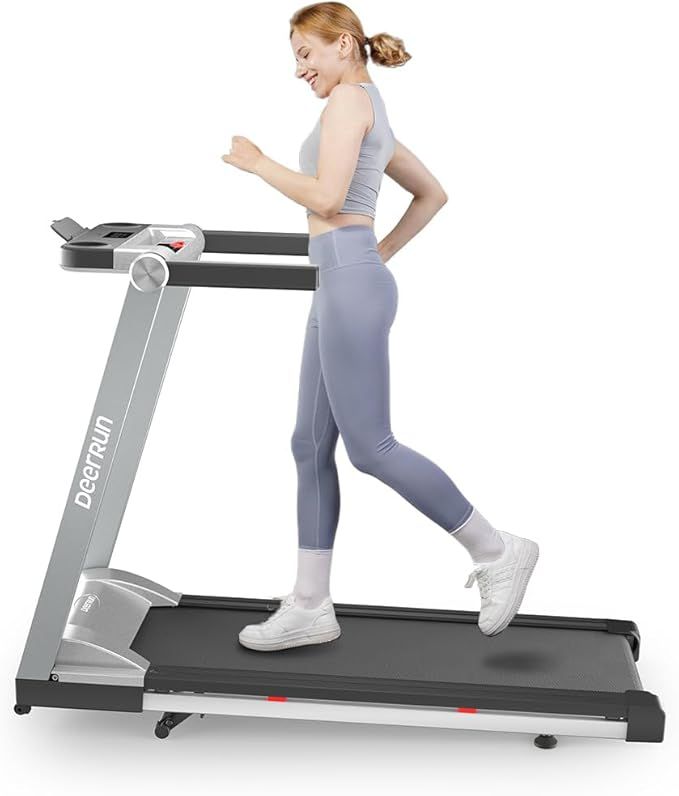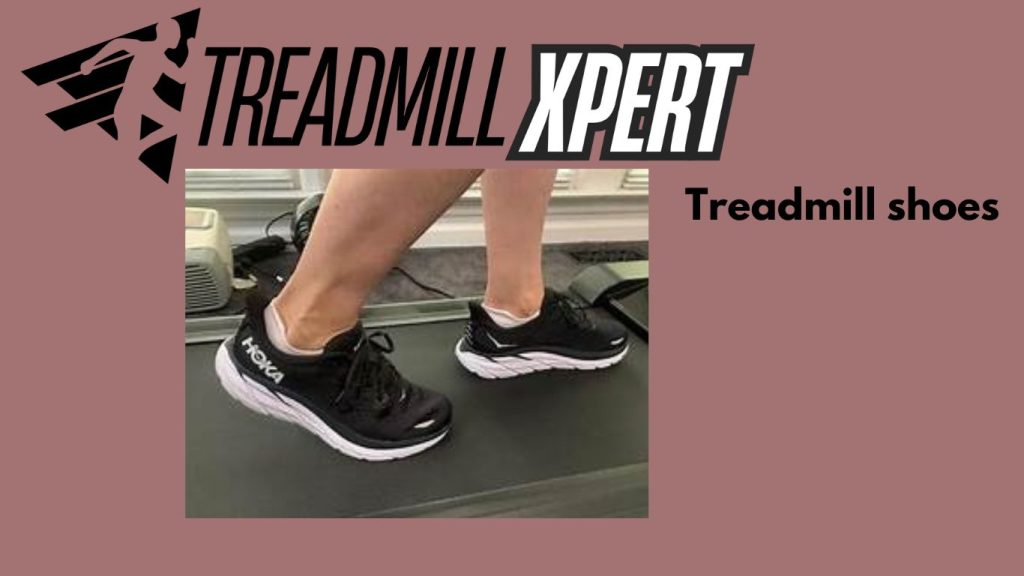What are the factors when choosing treadmill shoes?
Some key factors to consider when choosing treadmill shoes are Cushioning, Breathability, Lightweight, Stability, and Durability.
-
Cushioning:
Treadmills can be harder on joints than outdoor surfaces. Look for treadmill shoes with good cushioning to absorb impact. -
Breathability:
Treadmill shoes with breathable mesh uppers are ideal. Treadmill running can make your feet warmer. -
Lightweight:
Lighter treadmill shoes can help reduce fatigue during longer treadmill sessions. -
Stability:
Consider treadmill shoes with stability features if you have flat feet or tend to overpronate. -
Durability:
You should look for models with reinforced high-wear areas. Treadmill running can wear down shoes differently than outdoor running.
What are popular running shoe options?
Some popular treadmills running shoe options include Air Zoom Pegasus, Brooks Ghost, ASICS Gel-Nimbus, Hokan One One Clifton, and Sau cony Ride.
It would help if you remembered that the best shoe can vary based on your foot shape, running style, and preferences. It’s often helpful to try on several pairs or get fitted at a specialty running store so you can choose the ideal shoes.

How much price of treadmill running shoes?
Treadmill running shoes typically cost between $70 and $200, with most quality options in the $100 to $150 range.
Mid-range option prices range from $100 to $150. Many popular models fall in this category, offering a good balance of performance, comfort, and durability.
How many price Premium options?
Premium options price nearly$150 – $200+. These typically feature the latest technologies and premium materials and may offer specialized features.
What are the factors that affect price variation?
Keep in mind that prices can vary based on factors like brand, Specific model and its features, whether it’s a current or previous year’s model, and sales or discounts.
while expensive shoes aren’t always better, very cheap shoes (below $50) often lack the necessary support and durability for regular treadmill running can be chosen.
What shoes affect workouts?
Shoes affect workouts with different Impacts on performance, Injury prevention, Comfort, Specific workout considerations, and Long-term effects.
Impact on performance:
Proper shoes can improve stability, balance, and power transfer during the workout.
They can enhance speed and agility in sports-specific movements, so it makes an effective workout.
Good shoes may reduce fatigue, allowing for longer or more intense workouts so users feel easy.
Injury prevention:
Appropriate footwear provides cushioning to absorb shock so we can save the injury.
They offer support for your foot type (e.g., high arches, flat feet) so you can feel the injury.
Proper shoes can help maintain correct body alignment, and your body language supports you.
-
Comfort:
Well-fitted shoes reduce blisters, chafing, and discomfort, and feel comfort during the workout.
They can improve the overall enjoyment of exercise. You feel good and can do workouts for a long time. -
Specific workout considerations:
-
Running: Shoes affect stride, impact absorption, and energy return during running.
-
Weightlifting: Stable shoes improve balance and power transfer during weightlifting.
-
Cross-training: Versatile shoes support various movements in cross-training.
-
-
Long-term effects:
Using appropriate shoes can reduce wear on joints over time, especially for the patient, reducing pain.
They may help prevent chronic issues like plantar fasciitis, shin splints, and other injuries.
Choosing the right shoes for your workout type, foot shape, and fitness goals can significantly impact your exercise experience and results. -
When should you replace treadmill shoes:
Replace treadmill running shoes to maintain proper support and cushioning.
Some guidelines on when to change your shoes include mileage, time, visual signs, feel, uneven wear, and performance. -
Mileage:
The general rule is that shoes should be replaced every 400–500 miles (640–800 km).
Heavy runners or those with an intense stride may need to replace shoes sooner.
Lighter runners might extend this to 500–600 miles (800–970 km). -
Time:
If you don’t track mileage, consider replacing every 4–6 months with regular workout use.
Even unused shoes can deteriorate over time, so replace them after about one year—even if they are not heavily used. -
Visual signs:
Worn-out treads, especially on the heel.
Visible compression wrinkles in the midsole foam.
The shoe’s upper part breaking down or developing holes. -
Feel:
When running, you may feel less “bounce” or cushioning.
Your feet may feel more sore than usual.
You may experience new aches in your feet, knees, or hips. -
Uneven wear:
If shoes show uneven wear patterns, replace them.
Consider getting your gait analyzed during the workout. -
Performance:
Decreased performance or comfort during your running shoes affects your workout. -
Additional tips:
These are general guidelines.
Factors like your weight, running style, and the shoe’s quality can affect lifespan.
It’s a good idea to rotate between two pairs of shoes to extend their life and give the foam time to decompress between runs. -
Admit it:
Shoes are an essential investment for indoor runners.
They should prioritize cushioning, breathability, and lightweight design to enhance comfort and performance on a consistent surface.
Good options typically cost between $100 and $150, though prices can range from $70 to $200+.

What are the benefits of wearing treadmill shoes?
Key features include ample cushioning for joint protection, Breathable uppers to manage heat, Lightweight construction to reduce fatigue, and durability in high-wear areas.
What is a famous brand that offers the best treadmill shoes?
Popular brands like Nike, Brooks, ASICS, offer suitable models. To maintain proper support and avoid injury, Replace your shoes every 400-500 miles or 4-6 months of regular use.
Because the best treadmill shoes depend on individual foot shape, running style, and comfort preferences, it’s worth trying on multiple pairs or getting fitted at a specialty store to find the ideal match for your needs on treadmill shoes.
